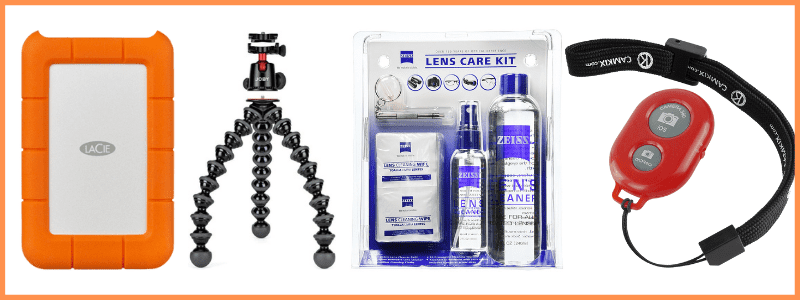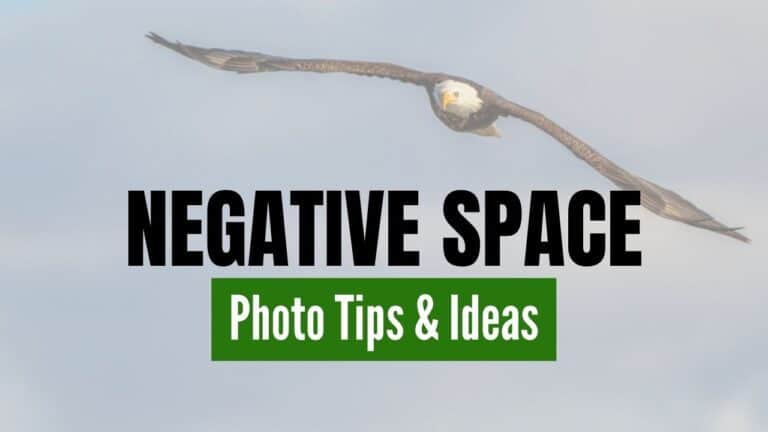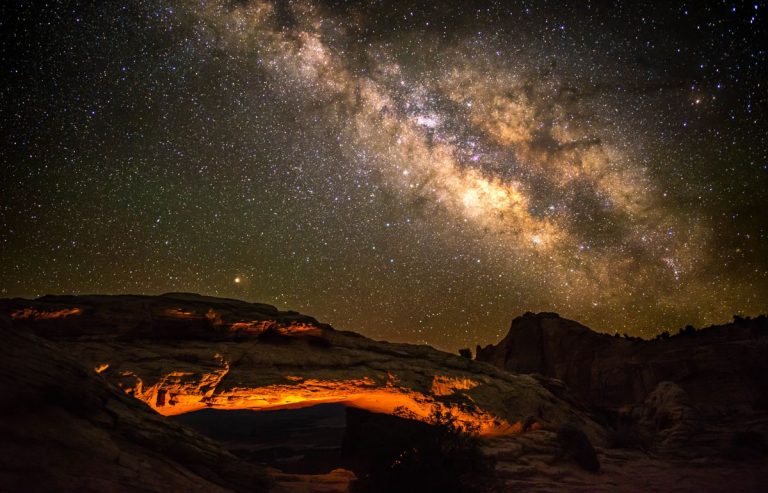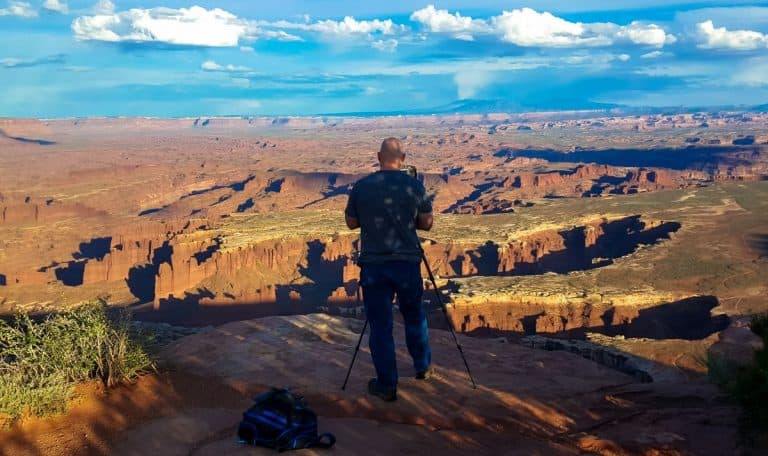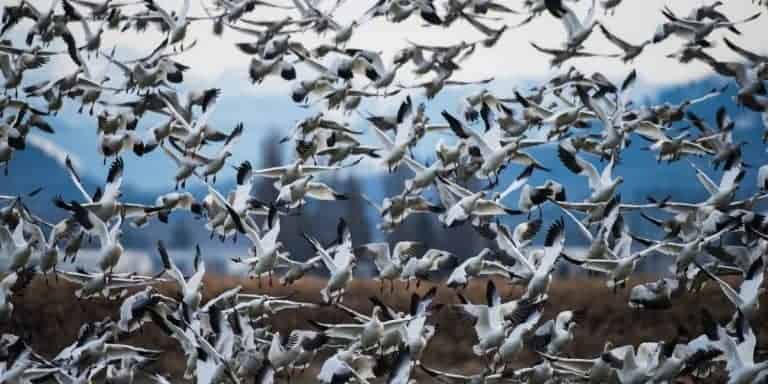Perspective Photo Ideas for Landscape Photography
What does it mean to use perspective in photography? Basically, it refers to the position and direction used to take a photo.
It’s a basic photography technique used to look at different angles and ways to take a picture.
Take a look at the perspective photo ideas to illustrate this compositional technique.
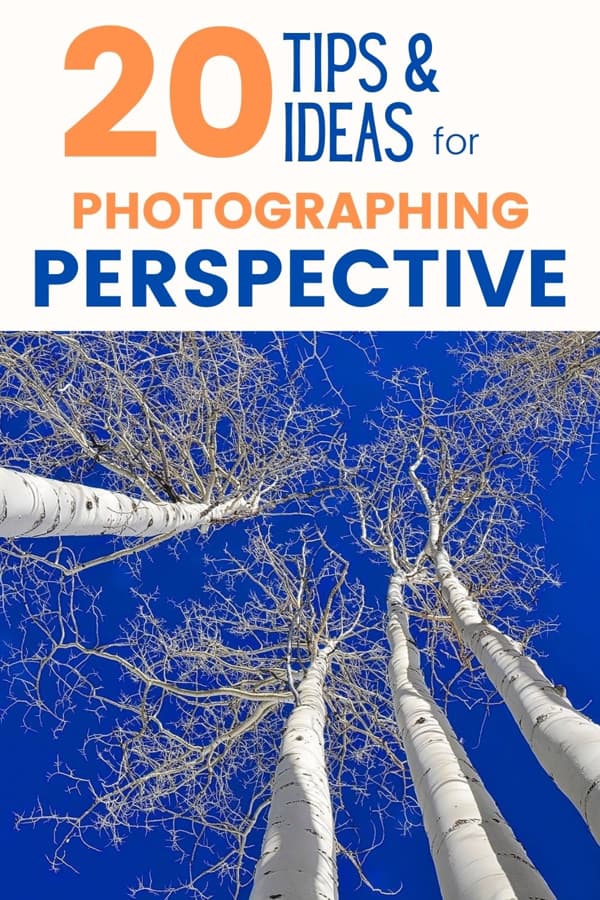
This site contains affiliate links which means WE may receive commissions for purchases made through these links. We only provide links to products we actually use and/or wholeheartedly recommend! As an Amazon Associate, we earn from qualifying purchases. Read the full Disclosure Policy.
Camera Gear for Landscape Photography
- Tripod: take a look at these compact and lightweight travel tripods!
- Camera Bag: protect your camera from sand and water → We use Lowepro camera backpacks for outdoor photography.
- Neutral density filter: to compensate for variance of light you’ll need to use a neutral density filter. → Check out the Kase magnetic filters we use!
- Camera cleaning kit: remove dust or water that WILL get on your lens. NOTE: this is not for cleaning the sensor.
- Memory cards: purchase name brand memory cards since you’re trusting your images to the card! → We use Lexar and Sandisk!
- External hard drive: copy photos to a portable external hard drive ‘just in case’.
- Headlamp: use when taking sunrise and sunset photos!
Camera Gear at B&H Photo
Photo Examples Using Perspective
Learn about using perspective in photography.
Take a look at the perspective photo ideas shared by members of our Facebook Group, Your Photography Journey.
WATCH the video as we discuss how perspective is used in each image.
Perspective Photo Ideas
There are different types of perspective in photography.
The end goal is to find a way to capture the subject or scene that’s different from what we see every day.
Finding different perspectives usually requires moving the camera and/or the photographer.
Vanishing Points
Daniel Garcia uses the bridge in this photo to illustrate linear perspective, where to parallel lines seem to converge as they get farther away.
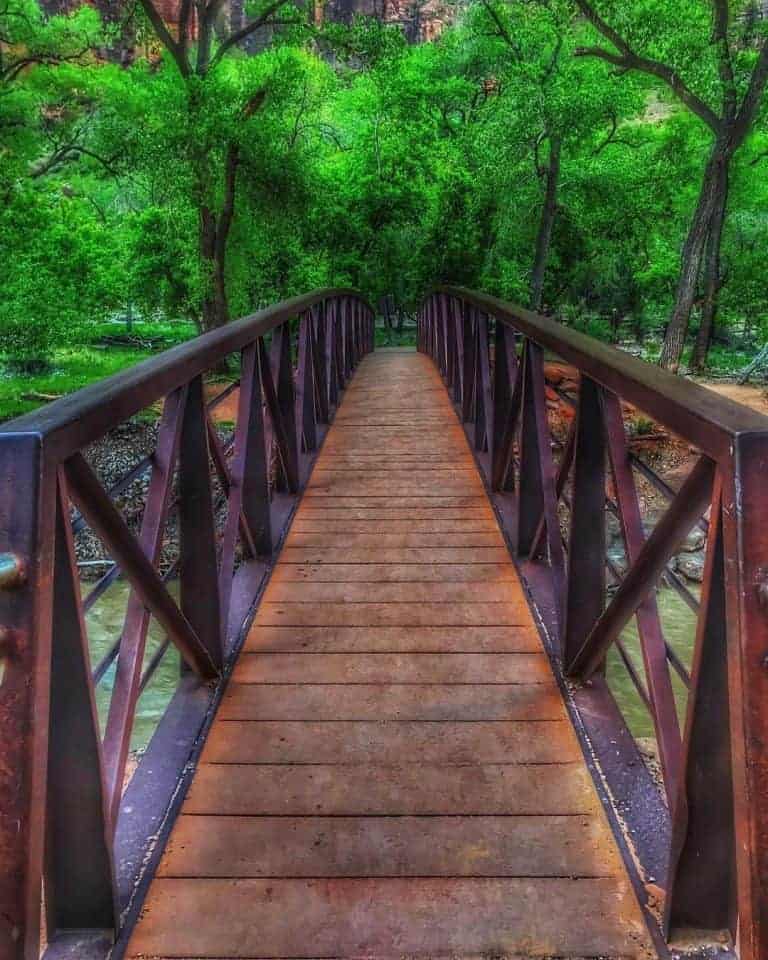
Leading lines go hand in hand with the concept of vanishing points for perspective.
In this photo by James Griffin, he also captures the idea of diminishing perspective inside this covered bridge.
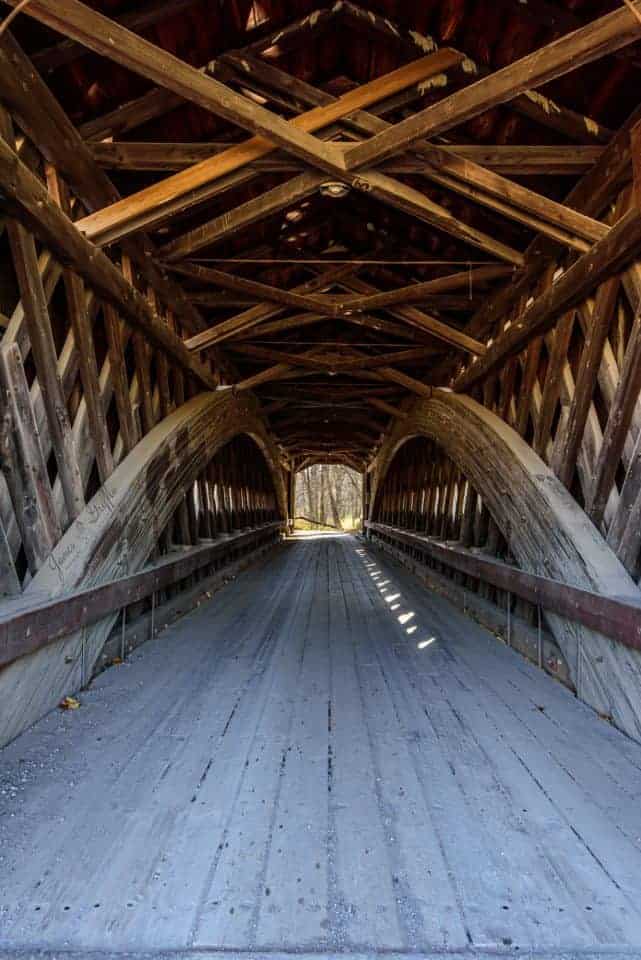
By filling the frame with the inside of the bridge, he creates a tunnel effect for the viewer.
The various wooden slats and lines lead the eye into and out the far side of the bridge.
Denise Thomason’s photo of this city street is another good example of perspective with a vanishing point.
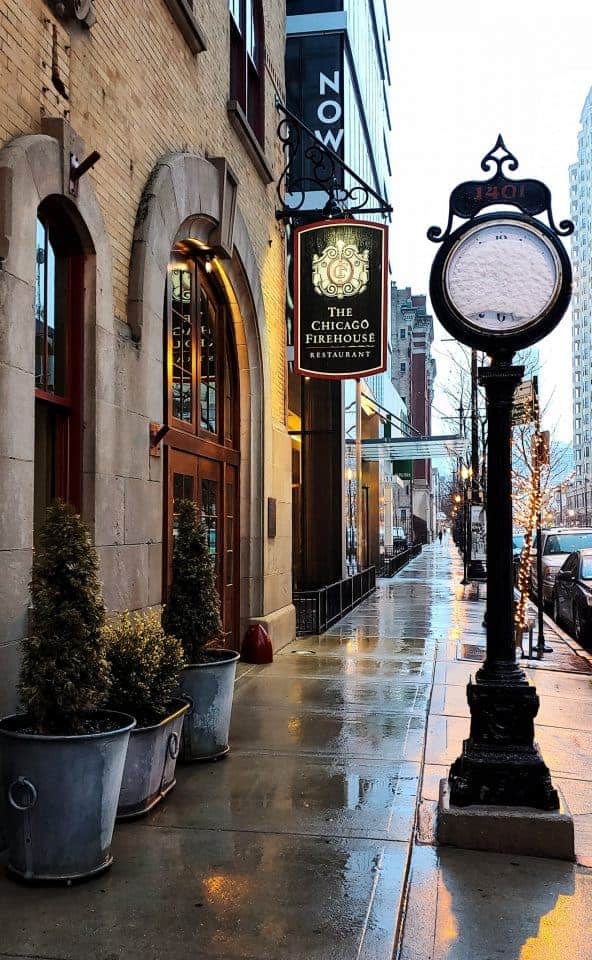
We see a scene like this in day-to-day life, but we seldom think about it.
Pay attention to vanishing points around you, and practice capturing this fun element of perspective.
Shoot Looking Up
Jeff Hall pointed his camera up to take this unique view of white aspen trees against the deep blue sky.

A photo like this of trees is not the typical view so it’s interesting. Don’t forget to look up to find a different way to capture a subject or scene.
In this image Delaney Van, she uses the idea of ‘looking up’ in two ways.
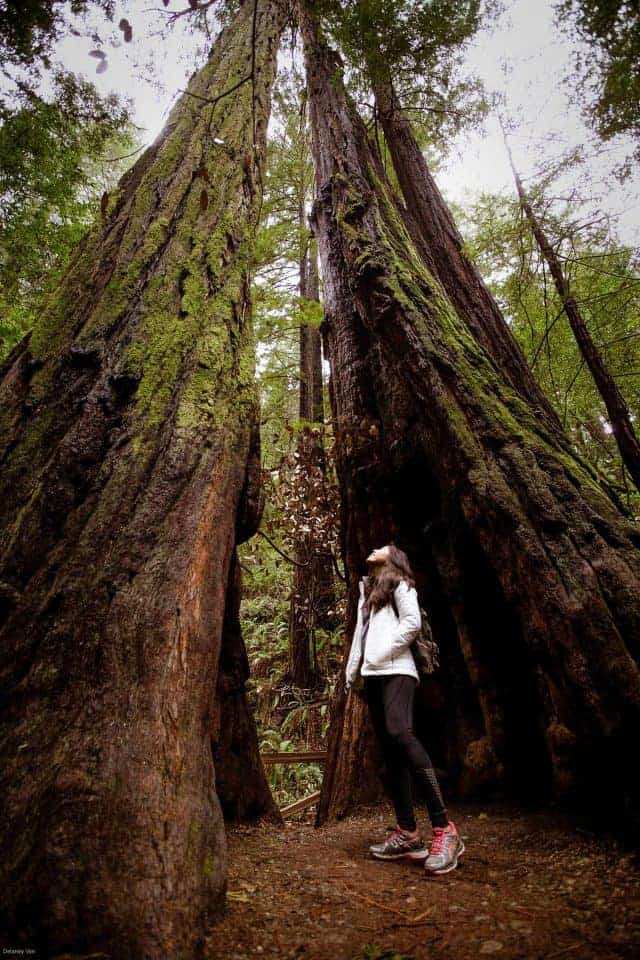
She has slightly tilted the camera up to capture the full scale of the tree from ground to sky.
And the girl in the photo looking up leads the view to follow that gaze toward the tops of the trees.
Using a leading line to guide the viewer up through the photo is another way to utilize perspective like Daphne Brislin has done here.
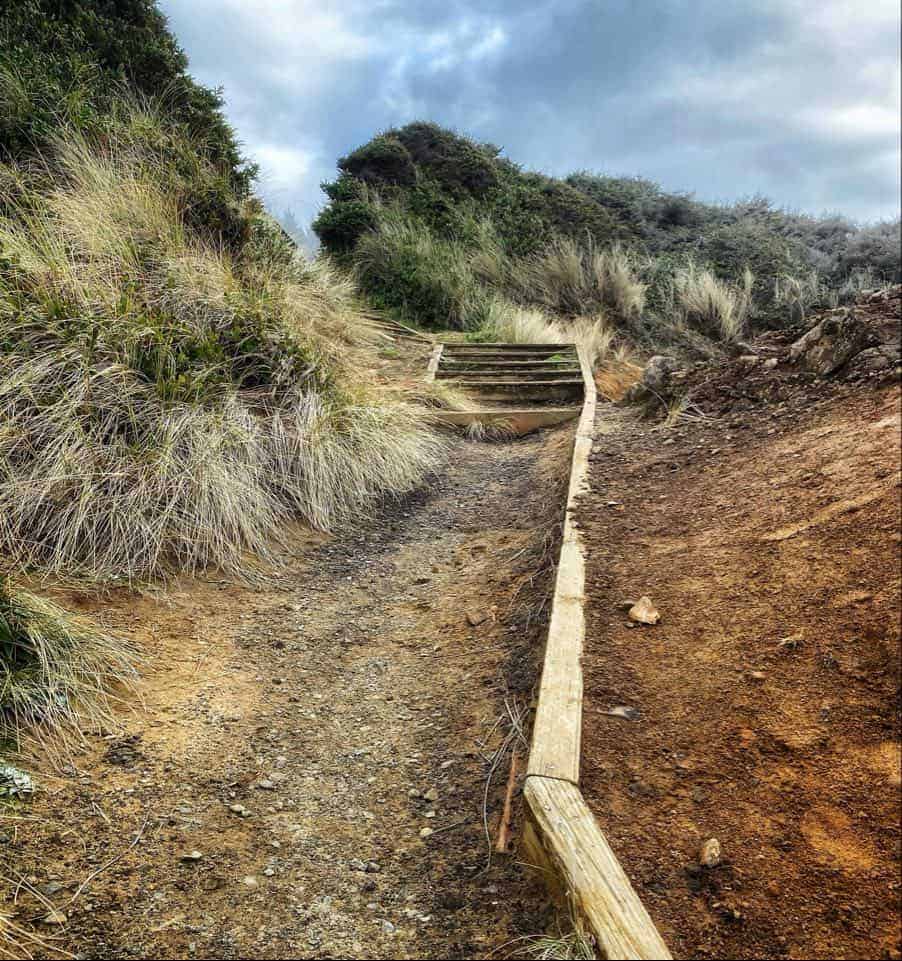
Be on the lookout for ways to photograph a subject or scene by looking up!
Shoot Looking Down
Capturing a scene by looking down is another perspective as seen in this photo by Wilfred Medwynter.

It’s not common to see something like this from above, so it creates interest for the viewer.
Notice how the lighthouse is placed in the scene using Rule of Thirds?
Franco Preston takes the idea of looking down to an even higher level using a drone!
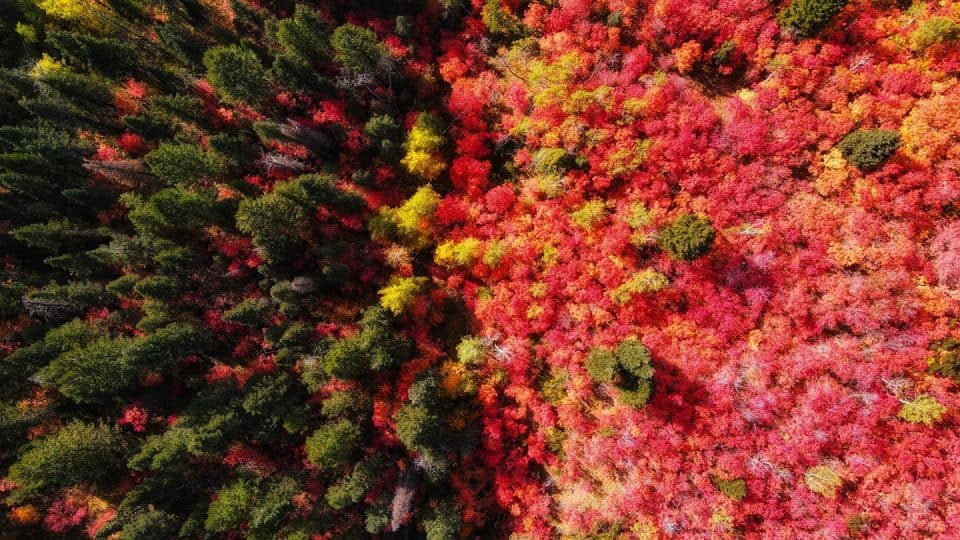
Getting a bird’s eye view of trees with fall color like this is stunning!
Shoot Hip Level
Goldhara McKay found a terrific way to photograph a landscape that’s not the every day view.
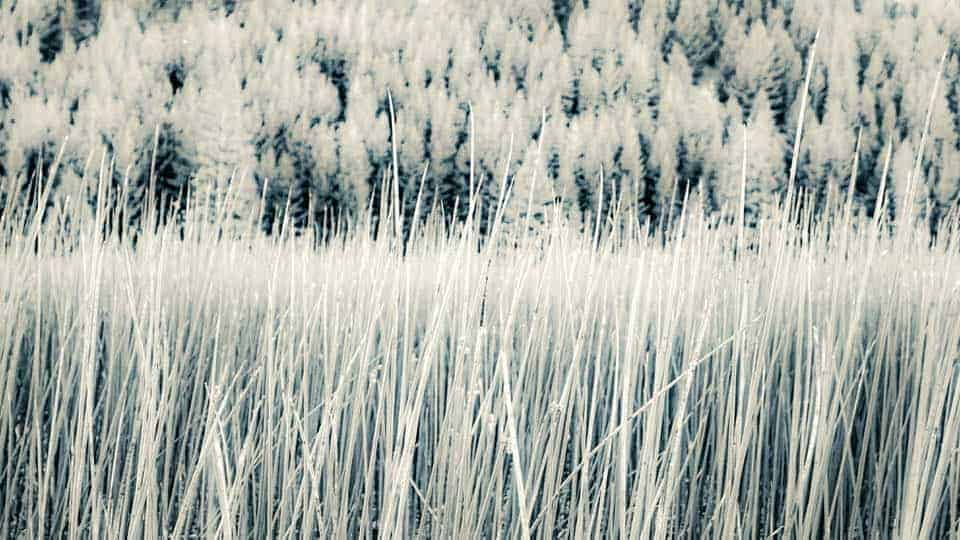
She positioned the camera lower than standing position, but not all the way to the ground. We call this hip level.
Taking a photo from this vantage point provides interest because it’s not a perspective we usually see.
Don’t you just say WOW when you see this photo taken by William Holmes!?
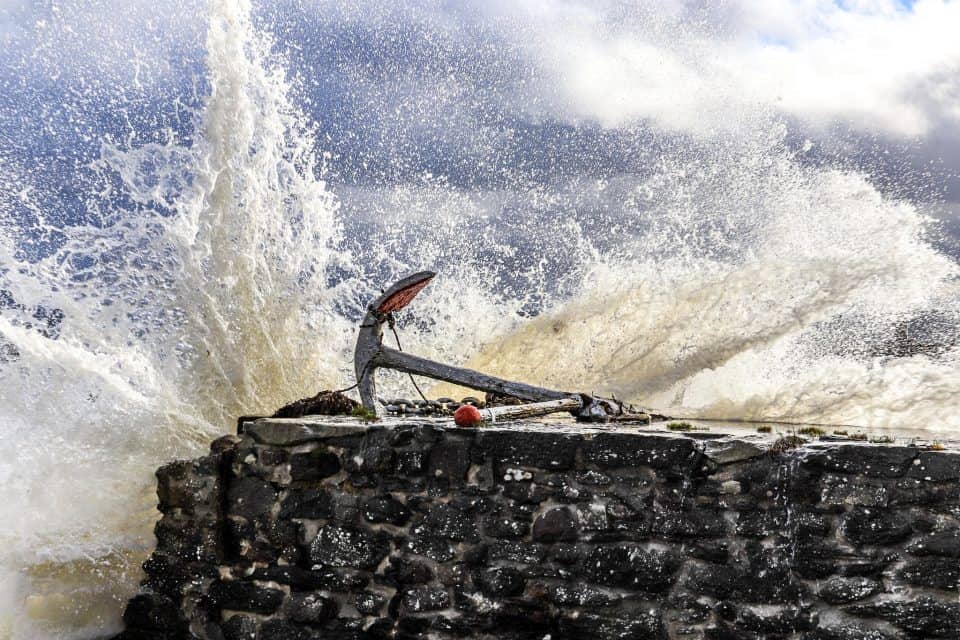
Part of the WOW factor is the hip level perspective. The viewer is eye level with the crashing wave and that makes a big difference!
Don’t forget to have camera lens cloths handy when you’ll be taking pictures near water.
Here’s another great example of capturing a scene at hip level with this photo by Kathleen Spatuzzi.
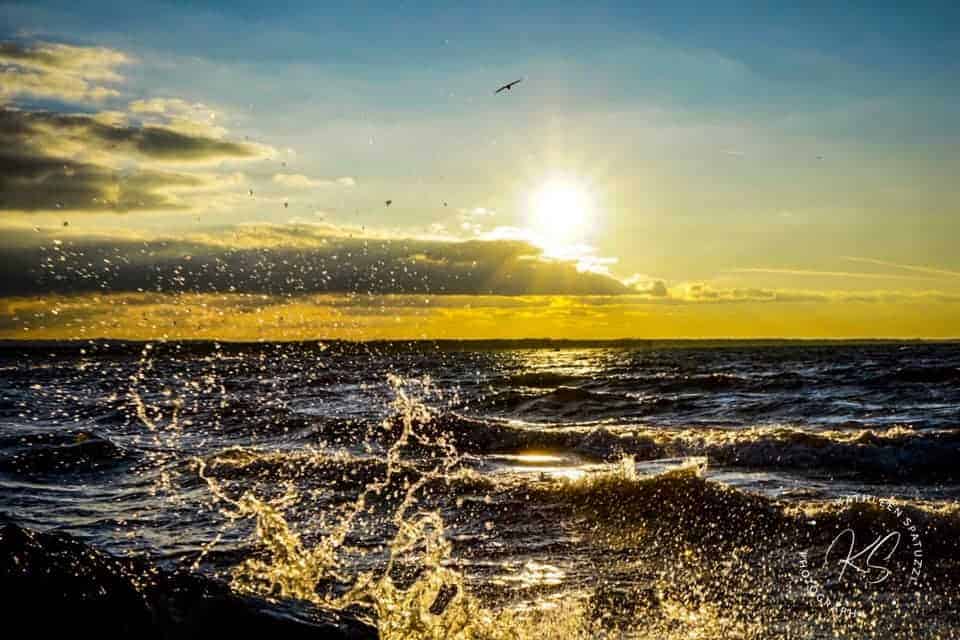
Notice the horizon line placed in the middle of the frame gives equal space for the sky and water, providing balance to this photo.
Start looking for ways to capture a subject or scene by shooting at hip level!
Get Low
One of the most impactful ways to get a unique perspective is by getting low. In this image by Kira Svenningsen, she’s level with the bird.
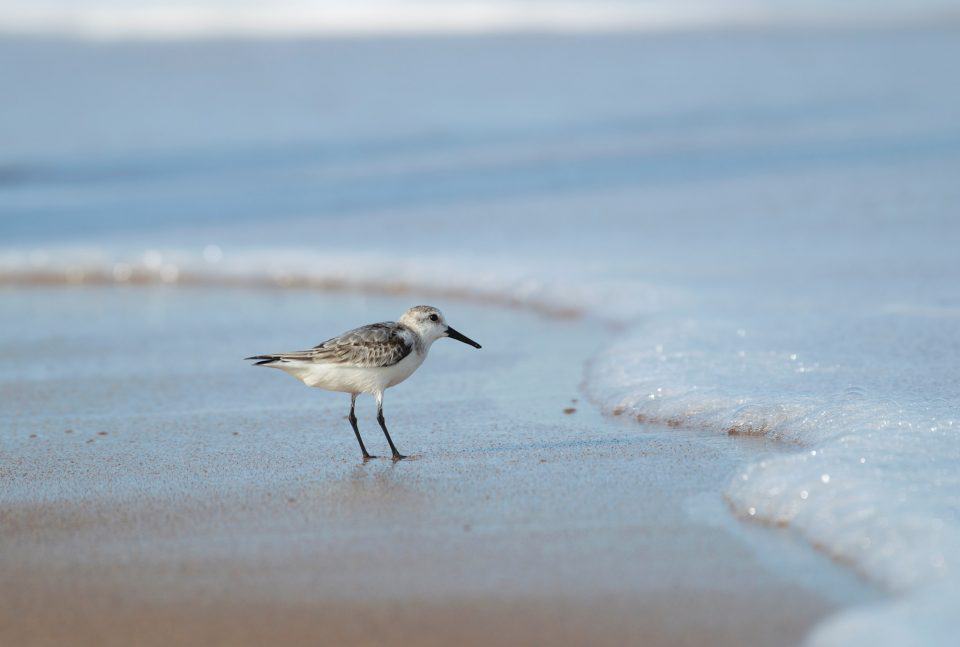
She had to squat or lie in the wet sand to get this shot! But that effort is worth it here!
Nadine Meyer used a low perspective to capture this scene of cut logs and dry leaves.
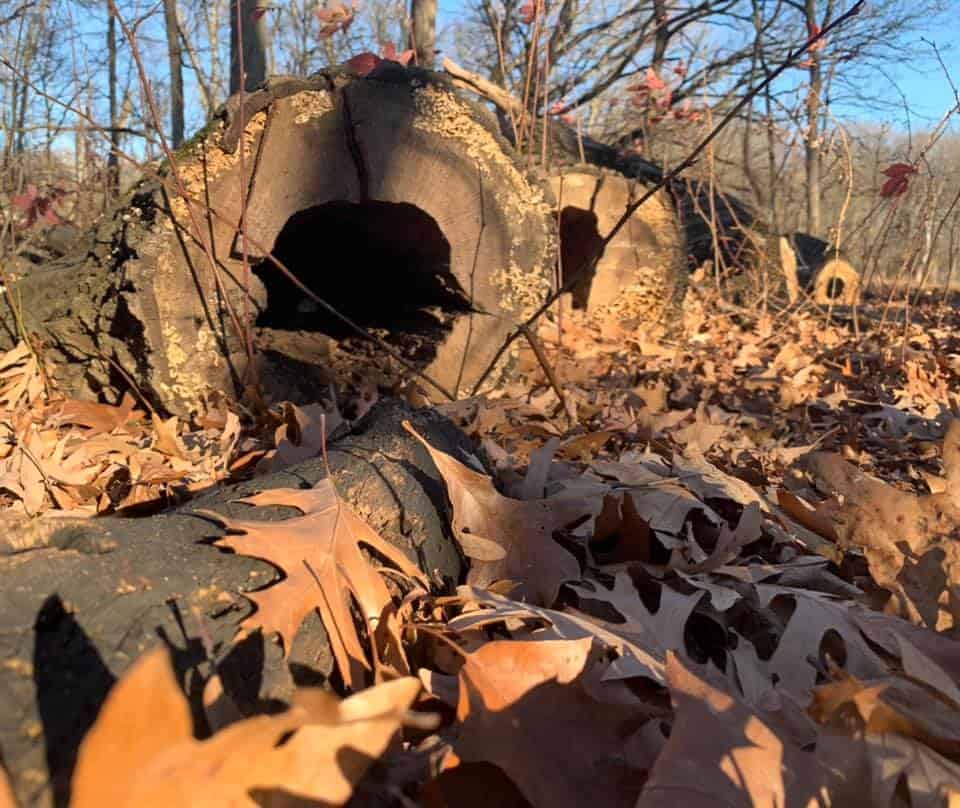
She also composed the photo so the viewer is looking into one of the logs.
And she’s incorporated the concept of foreground, midground and background to provide a sense of depth.
The simplicity of this photo of a leaf on the sand by Jay Hasson is stunning!
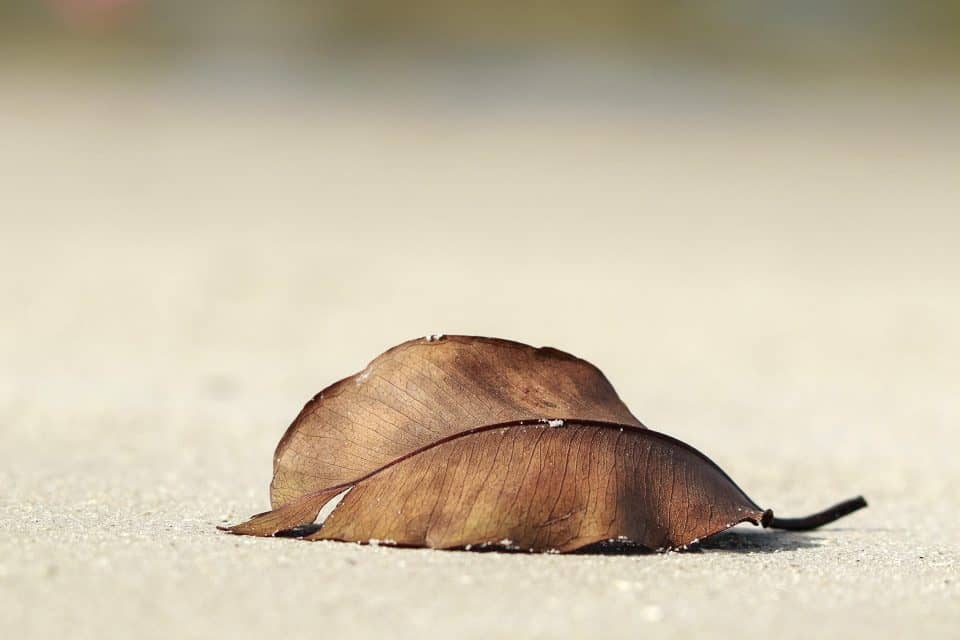
Getting low and eye level with the leaf makes the difference.
He also used Rule of Thirds and depth of field to compose this picture so the subject pops!
Getting on the same level as your subject is an important factor for photographing pets or people.
James Carro is lying on the sand to get this image of his dog. He’s used rule of thirds to place the dog in the frame.
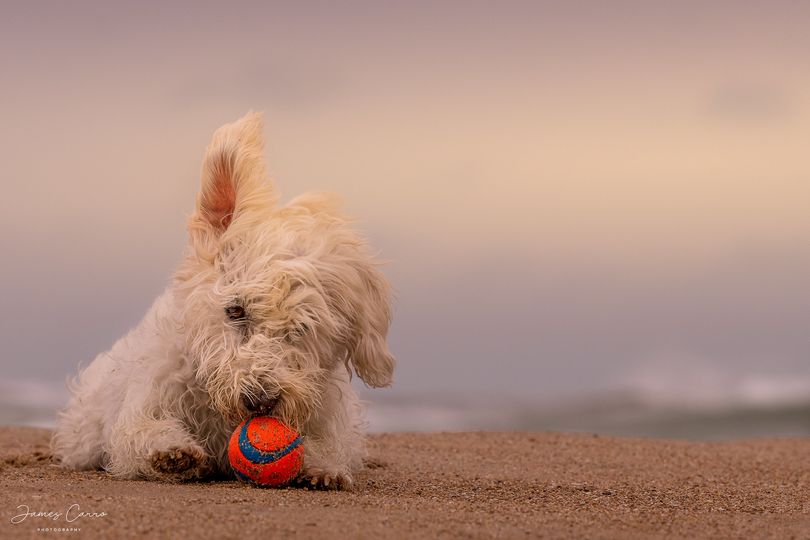
And when taking pictures of pets or people, focusing on the eyes (or eye) is a key element as demonstrated here as well.
Shoot Through Objects
A fun way to change perspective is to take a photo through something else.
In the picture by Jeremy Simpson, the viewer sees the cabin through the slats of the fence, which is interesting because it’s not the typical way to see this scene.
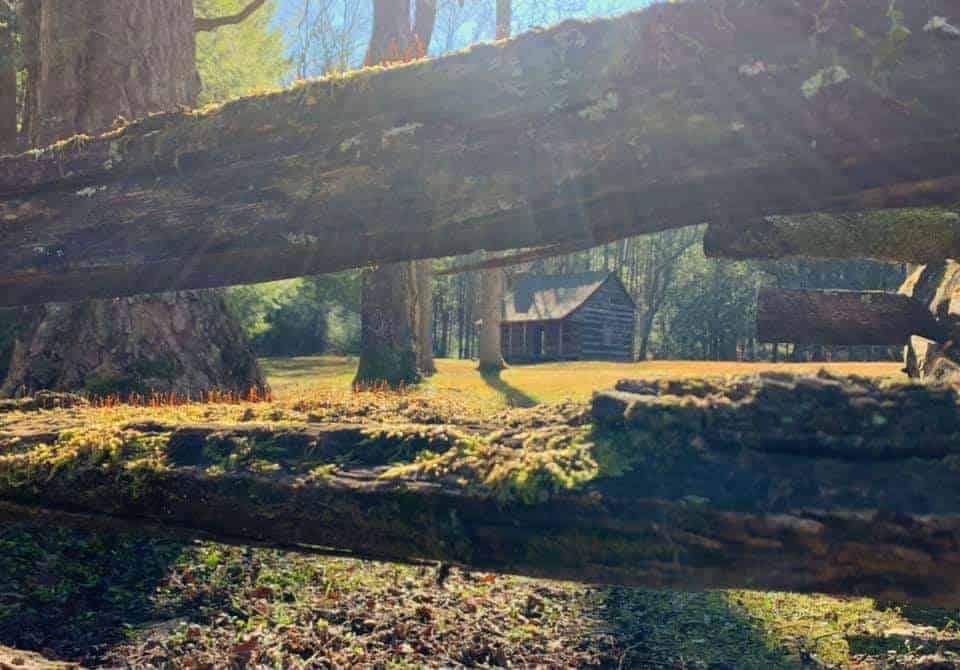
He also took the photo hip level or lower which adds another layer of interest.
John Buckley also used two different perspectives for this picture.
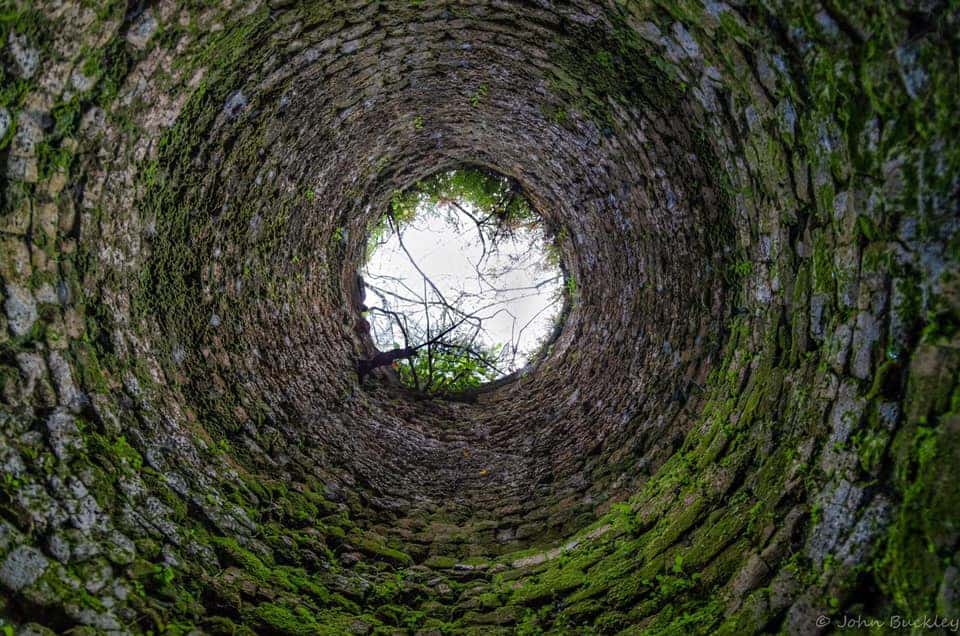
The viewer is looking through something while at the same time looking up!
It’s also interesting to note the lines and patterns created by the stones which also add interest.
Using a Combination of Perspectives
In this photo by Goldhara McKay, the bridge is an example of a vanishing point perspective.
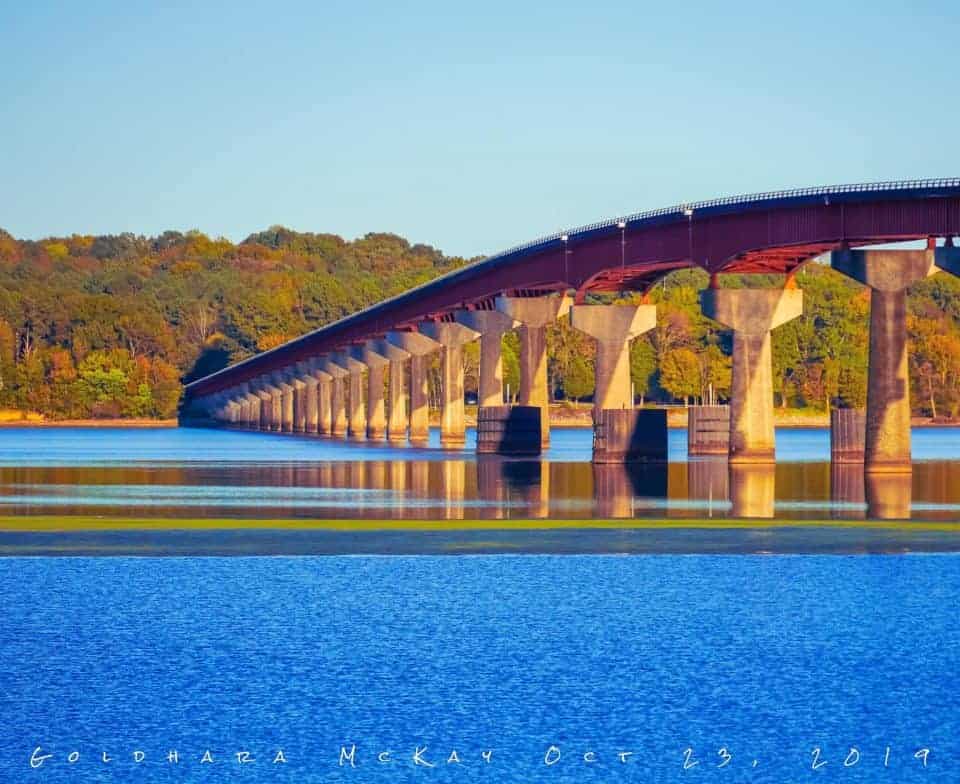
She’s also creating the illusion of looking up at the subject.
This image is a great example of layers as well with the water as foreground, the bridge as midground, and the trees and sky as background.
Melanie Loughery’s perspective taking the photo almost makes it look like a model with toy cars!
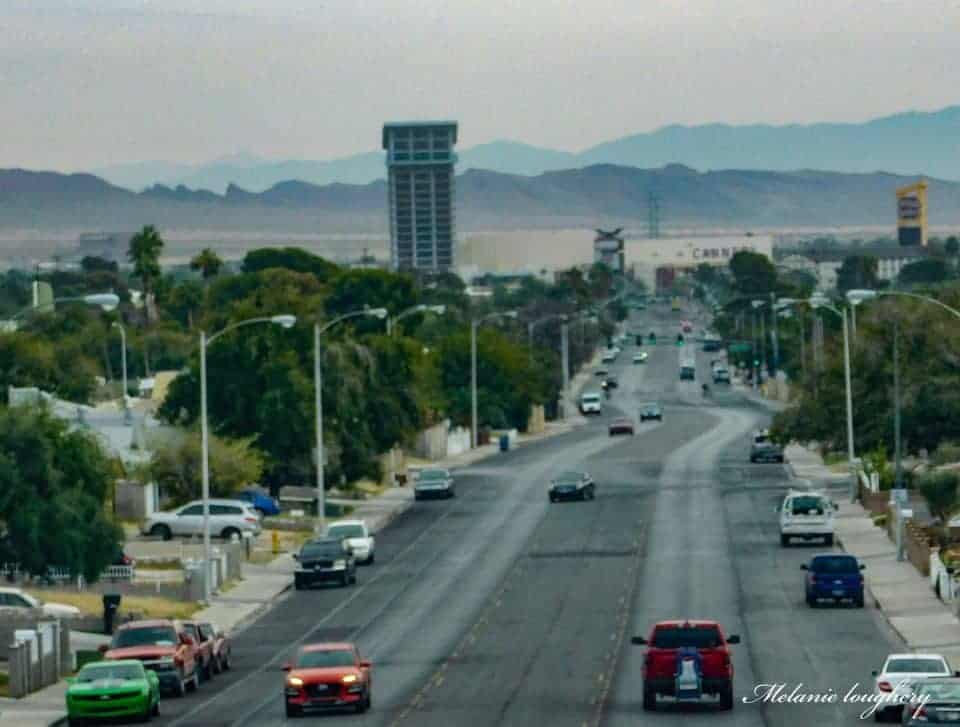
She’s using a perspective from above, as well as the vanishing point concept.
The leading lines and composition create a fun illusion of this street scene!
And finally, this picture taken by Rebecca Concilus uses a few techniques in addition to perspective.
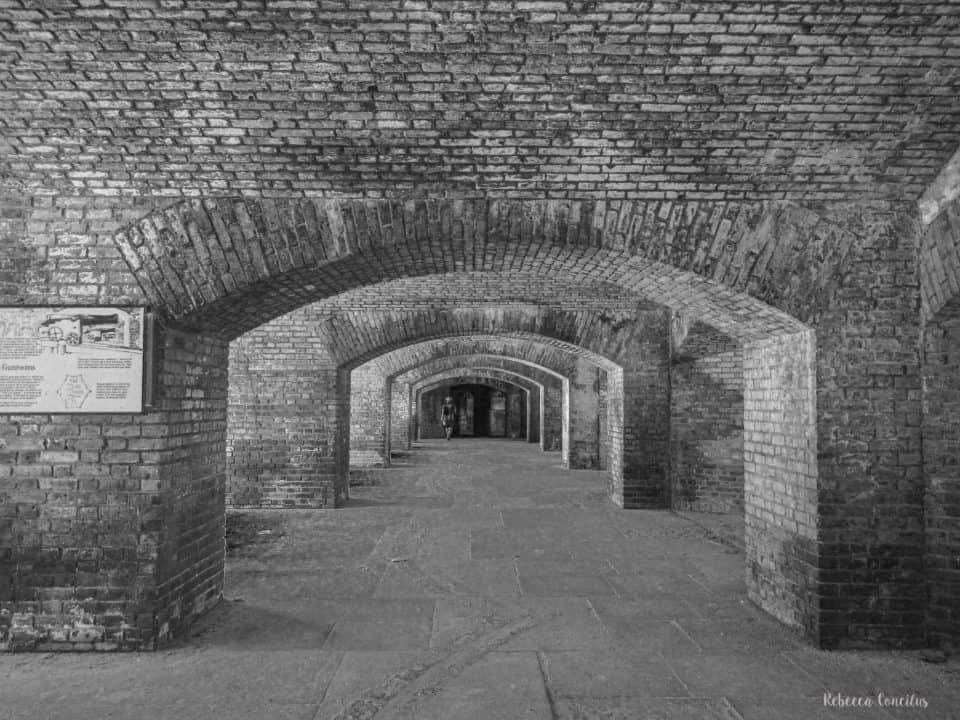
The first thing you see is the vanishing point perspective that leads the eye through the photo.
You may also notice she filled the frame so there were no distracting elements from this view.
And there’s a person in the background that helps to add scale to this scene.


